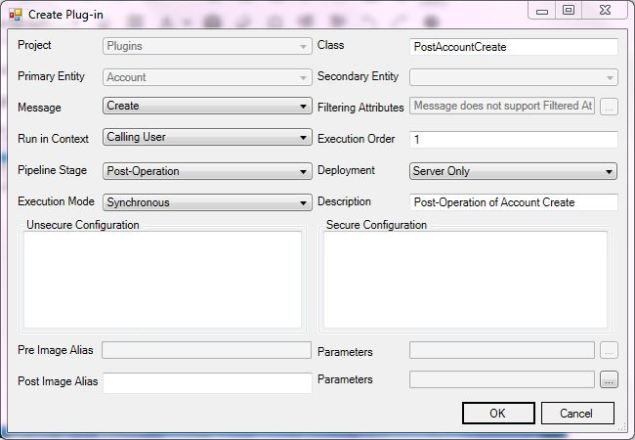With the release of the CRM 2016 SDK, came a much needed yet underrated update – Xrm.Tooling.Connector.
The team at Microsoft has simplified connections to CRM to the point of being a developer’s dream, no need for Http bindings, Service References, or countless debugging attempts to get a C# Console application or a ASP.NET Portal to connect to Dynamics CRM.
How to use it –
1 – The app.config file from the SDK example contains a sample of each connection type, make sure you have the correct connectionstring added to your app.config.
<!-- Online using Office 365 --> <!-- <add name="Server=CRM Online, organization=contoso, user=someone" connectionString="Url=https://contoso.crm.dynamics.com; Username=someone@contoso.onmicrosoft.com; Password=password; authtype=Office365"/> --> <!-- On-premises with provided user credentials --> <!-- <add name="Server=myserver, organization=AdventureWorksCycle, user=administrator" connectionString="Url=http://myserver/AdventureWorksCycle; Domain=mydomain; Username=administrator; Password=password; authtype=AD"/> --> <!-- On-premises using Windows integrated security --> <!-- <add name="Server=myserver, organization=AdventureWorksCycle" connectionString="Url=http://myserver/AdventureWorksCycle; authtype=AD"/> --> <!-- On-Premises (IFD) with claims --> <!--<add name="Server=litware.com, organization=contoso, user=someone@litware.com" connectionString="Url=https://contoso.litware.com; Username=someone@litware.com; Password=password; authtype=IFD"/>-->
**These connection strings are read as an array for the ConfigurationManager
2 – In your Console application,
2 – In your Console application,
string connStr = ConfigurationManager.ConnectionStrings[0].ConnectionString;
3. To use this connection string
// Establish a connection to the organization web service.
Println("Connecting to Online using O365...");
// Connect to the CRM web service using a connection string.
CrmServiceClient conn = new Microsoft.Xrm.Tooling.Connector.CrmServiceClient(connStr);
// Cast the proxy client to the IOrganizationService interface.
//_orgService = (IOrganizationService)conn.OrganizationWebProxyClient != null ? (IOrganizationService)conn.OrganizationWebProxyClient : (IOrganizationService)conn.OrganizationServiceProxy;
IOrganizationService service = (IOrganizationService)conn.OrganizationServiceProxy;
Print("connected");
// Obtain information about the logged on user from the web service.
Guid userid = ((WhoAmIResponse)service.Execute(new WhoAmIRequest())).UserId;
Entity systemUser = (Entity)service.Retrieve("systemuser", userid,
new ColumnSet(new string[] { "firstname", "lastname" }));
Println("Logged on user is " + systemUser.Attributes["firstname"].ToString() + " " + systemUser.Attributes["lastname"].ToString() + ".");
// Retrieve the version of Microsoft Dynamics CRM.
RetrieveVersionRequest versionRequest = new RetrieveVersionRequest();
RetrieveVersionResponse versionResponse =
(RetrieveVersionResponse)service.Execute(versionRequest);
Println("Microsoft Dynamics CRM version " + versionResponse.Version + ".");
And Finally, don’t forget to add the assembly reference –
using Microsoft.Xrm.Tooling.Connector;













